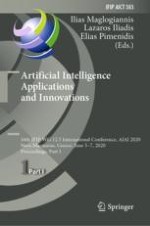2020 | OriginalPaper | Buchkapitel
Optimizing Self-organizing Lists-on-Lists Using Transitivity and Pursuit-Enhanced Object Partitioning
verfasst von : O. Ekaba Bisong, B. John Oommen
Erschienen in: Artificial Intelligence Applications and Innovations
Aktivieren Sie unsere intelligente Suche, um passende Fachinhalte oder Patente zu finden.
Wählen Sie Textabschnitte aus um mit Künstlicher Intelligenz passenden Patente zu finden. powered by
Markieren Sie Textabschnitte, um KI-gestützt weitere passende Inhalte zu finden. powered by
